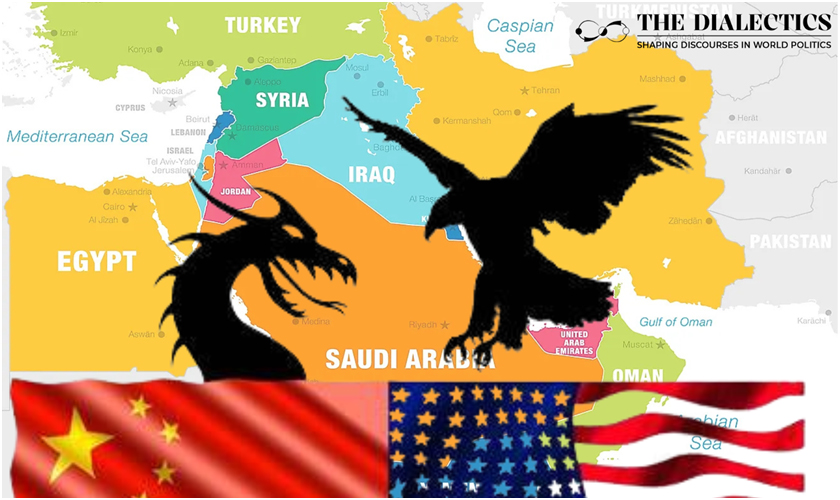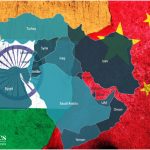Introduction
The Middle East has always been an area of great power conflict, where various foreign nations vied to resolve disputes for geopolitical and economic purposes. For decades, the sole external sponsor in the region had been the United States, which marked and exercised considerable influence over the area. However, the recent shifts in global power dynamics created opportunities for additional participants. China is one such country that has emerged not only as a partner for trade and investment, but more so for diplomacy. After all, the successful Chinese mediation of the Iran-Saudi Arabia détente in early 2023 marked a possible turning point for Middle Eastern diplomacy, signifying a departure from the American-led model. This research focuses on China’s new stance as a mediator in the Middle East and the strategies it has changed in terms of mediation, the possible impact on the framework, such as the Abraham Accords, and the likelihood of emerging as a better mediator than the United States.
From Pax Americana to a Multipolar Mediation Order
With an emphasis on security, the U.S. has historically mediated peace negotiations in the Middle East. Mediations were motivated primarily by military relations, the war on terror, and support for Israel’s strategic dominance. The Oslo Accords and Camp David Summit were illustrative of that policy, which centred United States interests in the Israeli-Palestinian conflict. Most recently, the Abraham Accords, negotiated under Trump, continued the American policy of aligning Gulf Arab states with Israel to counter Iranian influence.
This policy comes with some limitations. It tended to ignore key actors such as Iran and Hezbollah, failed to achieve sustainable peace in major conflicts like Syria and Yemen, and provoked numerous criticisms of partisanship, especially in the Israeli-Palestinian conflict. A vacuum has now emerged as the United States shifts its focus to the Indo-Pacific, reducing its military footprint in the Middle East. China seeks to fill this void, not with aircraft carriers, but through economic diplomacy and multipolar engagement.
China’s Entry: A New Mediation Paradigm
China’s mediation approach differs from that of the U.S. in substance and tone. Based on its non-interventionist foreign policy and Belt and Road Initiative (BRI) strategic focus, China’s style is economy-first, neutral, and transactional. China’s 2023 Iran-Saudi normalization agreement, facilitated in Beijing, typified this approach: economy-first, neutral, and quiet diplomacy, along with respect for sovereignty and focusing on stability via economic integration.
Instead of talking through ideological spectacles of “democracy vs. autocracy” or sectarian divisions, China pursues a values-neutral stance. This is attractive to Middle East regimes that resent Western conditionality about human rights or political liberalization. Beijing’s growing trade with the Middle East—China is the largest trading partner of most Arab states, as well as Iran—provides it with significant influence without the colonial legacy constrictions of old or military intervention.
Mediation Through Economics: A Paradigm Shift
The comparative advantage of China as a Middle Eastern mediator is economic in nature. It employs the weapons of trade, infrastructure investment, energy partnership, and technology transfers as tools of soft power and persuasion. This paradigm shift from security-dominated to economy-centred mediation can change regional diplomacy.
Energy Interdependence: China is the biggest importer of Middle Eastern crude oil. Chinese energy security is directly impacted by stability in the region. This provides Beijing with both the incentive and credibility to play the role of a neutral broker among regional powers.
Infrastructure Diplomacy: By investing in ports, industrial parks, and railways from Gwadar to Haifa through the BRI, China has helped regional connectivity and made peace desirable and profitable.
Digital Silk Road: China’s offering of digital infrastructure—from 5G to surveillance technology—bolsters its influence over Middle Eastern regimes and can be utilised to enhance cyber and technological cooperation as a peace dividend.
Debt Diplomacy and Development Aid: Unlike Western aid tied to reform, Chinese loans and investments come with few political strings. This non-coercive approach appeals to autocratic regimes and helps Beijing build trust and dependency.
Challenging the Abraham Accords
The Abraham Accords represented a strategic success for the U.S. and Israel, encouraging Arab-Israeli normalisation and isolating Iran, but they are not based on the resolution of the Palestinian issue and are still very securitised. China’s model of mediation challenges the Accord’s logic on a number of fronts:
Exclusivity vs. Inclusivity: The Abraham Accords excluded Iran, Syria, and Lebanon, further entrenching regional divisions. China, conversely, embraces all stakeholders in its talks, including Iran and non-state actors indirectly, hence facilitating a more inclusive regional structure.
Strategic Alignment vs. Economic Interdependence: Though the Accords emphasise military collaboration and intelligence exchanges, China favours joint ventures, trade corridors, and energy markets. Economic interdependence could be more long-lasting and less sensitive.
Soft Balancing: China’s growing influence among GCC nations, Iran, and even Israel (via tech and trade) enables it to provide alternative diplomatic channels. If Beijing can broker a larger framework involving Iran and Palestinian interests, the Abraham Accords may lose their strategic primacy.
Reduced U.S. Leverage: If Arab states increasingly look to Beijing for economic growth and political balance, Washington’s ability to use military aid or sanctions as leverage diminishes. China offers an escape hatch from zero-sum alignments.
Will China Be a Better Mediator?
Whether China is a “better” mediator than the U.S. is a function of how success is defined. If the aim is lasting peace and resolution of underlying causes, both nations are limited. Yet if the aim is to dampen conflict, facilitate coexistence, and encourage economic integration, China’s model has potential.
Strengths of China’s Mediation:
Neutral Reputation: In contrast to the U.S., China does not appear to be taking sides in local sectarian or ideological conflicts. This earns it credibility in eyes of rivals.
Economic Incentives: China provides genuine economic benefits to cooperate, ranging from infrastructure to access to markets, that are attractive to governments and elites alike.
Avoidance of Military Entanglements: China’s absence of bases or military alliances (save a small one in Djibouti) minimizes illusions of neocolonialism or coercion.
Shortcomings of China’s Mediation:
Insufficiency of Political Leverage: China has few mechanisms to coerce parties into peace aside from economic enticements. It eschews sanctions, calls for regime change, or threats of war.
Risk Aversion: Beijing prefers stable, low-risk mediation and is hesitant, which might constrain its capacity to deal with crises involving high volatility such as Israel-Palestine.
Limited Cultural and Political Understanding: In contrast to the U.S., China has limited institutional and academic knowledge of the complex political environment in the region.
Nevertheless, China’s model could be apt for the Middle East today, where authoritarian resilience, economic pragmatism, and post-American recalibration are the order of the day. China’s Middle Eastern mediation role also marks a more general transformation of global order.
End of the U.S.-led Liberal Order: As regional states hedge ever more between the U.S. and China, American power to set the agenda erodes.
Rise of a Multipolar Region: In addition to Russia, Turkey, and China, Middle Eastern states are now dealing with an increasingly varied array of external players.
Strategic Autonomy of Middle Eastern States: Nations such as Saudi Arabia and the UAE are using connections with Washington and Beijing to make independent foreign policy.
The same trend can be observed in their positions on international affairs such as the war in Ukraine, de-dollarisation of the dollar, and the expansion of BRICS+, all of which involve China having a dominant role.
China’s presence in Middle Eastern mediation is a structural realignment in the regional diplomatic landscape. Contrary to Washington, whose initiative is frequently tainted by partisanship and military baggage, China is able to present a new, economy-focused, and non-interventionist vision appealing to many in the region. Although Beijing is unlikely to supplant Washington immediately, its capacity to provide alternative frameworks—based on economic interdependence and not military pacts—has the potential to transform Middle Eastern geopolitics.
As global power continues to shift Eastward, the Middle East’s future may no longer be written in Washington, but in Beijing’s meeting rooms, trade corridors, and diplomatic white papers. Whether China will sustain this balancing act or stumble on the region’s complex politics remains to be seen, but its emergence as a credible mediator is already altering the calculus of peace and conflict in West Asia.





